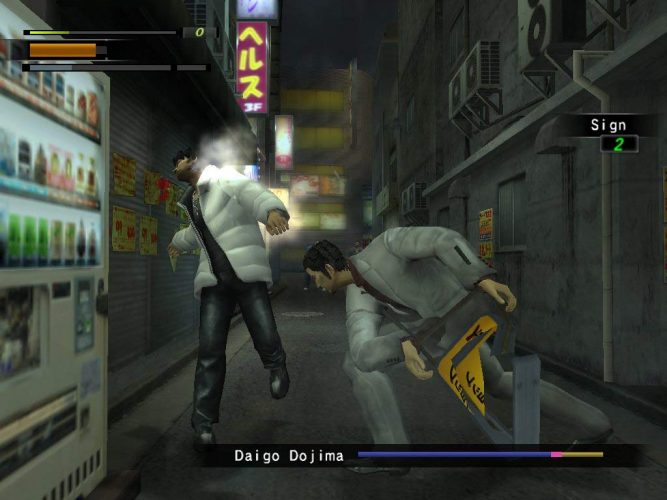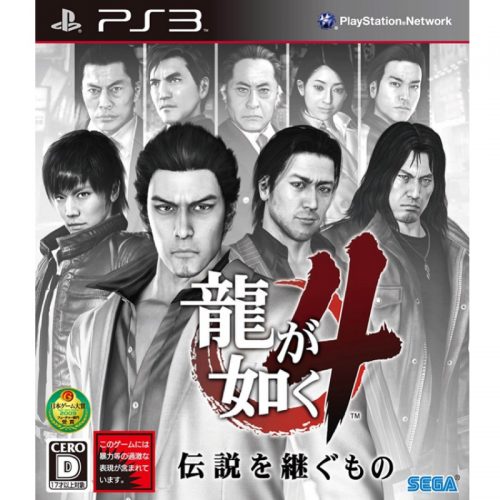
As previously shared in our part 1 to A History of Yakuza/Ryu Ga Gotoku, Toshihiro Nagoshi, the original creator, had no intentions of releasing it overseas as he only wanted to appeal to a domestic mature male audience. Thanks to the power of the internet, which was making progress in being in most households midway into the 2000’s, many international fans expressed interest based on the Japanese promotions. As stated before, a good percentage of the hype came from Shenmue fans, who were at the time still awaiting news for a third installment (which wouldn’t be announced for another 9 years), and considering that the game was a product of Sega in which you can explore Japan, some were pre-maturely calling it a successor to Shenmue for those very reasons. Whether or not that is so, is still another discussion for another time. For now, we wish to explore how this Japanese hit, managed to get an international cult following.
September 2006, A Cult Hit
Just 9 months after its Japanese release, the original PS2 game was available to the rest of the world. While the original Japanese title, Ryu Ga Gotoku, literally means “like a dragon,” the international release was re-titled as Yakuza to obviously better advertise and represent what the game is about. As opposed to keeping the original Japanese dialog (which would be the case for the remainder of the series), the international release would have an English dub featuring some notable performers such as Michael Madsen, Eliza Dushku, and Mark Hamill.
The team originally wanted both tracks, but the localization team shared in an interview that the technological limits made that impossible at the time. The game managed to capture a cult audience, but many were critical of the voice acting and felt hearing it in English was unnatural. However, a prematurely released trailer also didn’t help at all with its international debut. Many praised it for representing Japan and for its unique portrayal of the nation’s underworld, and its crazy action sequences. However, due to how the content only appeals to a small audience at that time, the game only managed to become a cult hit and later in 2006, Japan released the second installment of the series and once again, Sega had no plans to release it overseas.
Western Fate in the Balance
In Japan, the second installment was another hit and the team immediately addressed its domestic criticisms, most notably the aiming of its combat mechanics. It vastly improved how you can take on multiple opponents in both defense and offense. Not only that, the second game raised the stakes as it allowed Kiryu to visit Sotenbori, based on Osaka’s entertainment district, Dotonbori as he must stop an all out war between the Tojo-kai, his former gang based out of Tokyo, and Osaka’s Oumi Rengou. It was a critical hit in Japan upon its debut, but wouldn’t get a western released until September 2008.
Trusting Fan Demand
Just like how the team in Japan responded to the criticisms of the combat, the localization team in-turn listened to the criticisms of its Western audience. Many fans felt that since the game dealt with Japanese culture and that it takes place in Japan, it makes perfect sense to keep it in Japanese. They understood fans wanted a sense of authenticity by keeping the language (especially when people in Osaka in the game speak in Osaka dialect), and for a majority of the remaining international releases, they would exclusively keep the Japanese track, and is also less time consuming in making it ready. When the game came out on international shores on September 2008, many gamers were positive to keeping the game in Japanese, but still maintained a cult audience.
Ambiguity
When it comes to the international releases of the Yakuza franchise, their international releases are largely kept ambiguous upon their Japanese releases, and this still continued with the PS4 remasters of the third, fourth, and fifth installments. A large majority as to why it takes anywhere from a little less than a year to even three years from a Japanese release is due to concerns of whether or not it would succeed outside of Japan, and that it’s also time consuming to translate and appropriately localize these respective games. While it did take over a year for Sega to officially announce the international releases of the PS4 remasters, the PSP games and its two historical spin-offs, Kenzan and Ishin, have yet to have an international release.
As for the PSP games, or Kurohyo, many can conclude that due to the fact that the PSP outside of Japan doesn’t have the same success, there’s no reason to bother releasing them. As for Kenzan and Ishin, due to how the games largely deal with Japanese history, it would be difficult for a Western audience to relate to them. Regardless, its strong fanbase have expressed interest in playing them as it could educate them about Japanese history as how the main installments educate them about modern Japanese culture.
Final Thoughts/Fate Once Again in the Balance

When Yakuza 4 was released to non-Japanese audiences in 2011, it didn’t exactly meet expectations and once again, the international release of the 5th game, which was released in Japan in 2012, wouldn’t get released until 2015 as a download exclusive! The game wouldn’t begin to become a bigger international hit until the release of its prequel, Yakuza 0, which takes place in 1988. When the sixth game came out internationally, it would also be the first time the international sales would equal its domestic sales proving that persistence and patience does pay off. Earlier in 2019, the international version to Judgment, which takes place in the Yakuza universe would also become a big hit. Even so, it still had its share of troubles both here and there, which we’ll save for another article.


